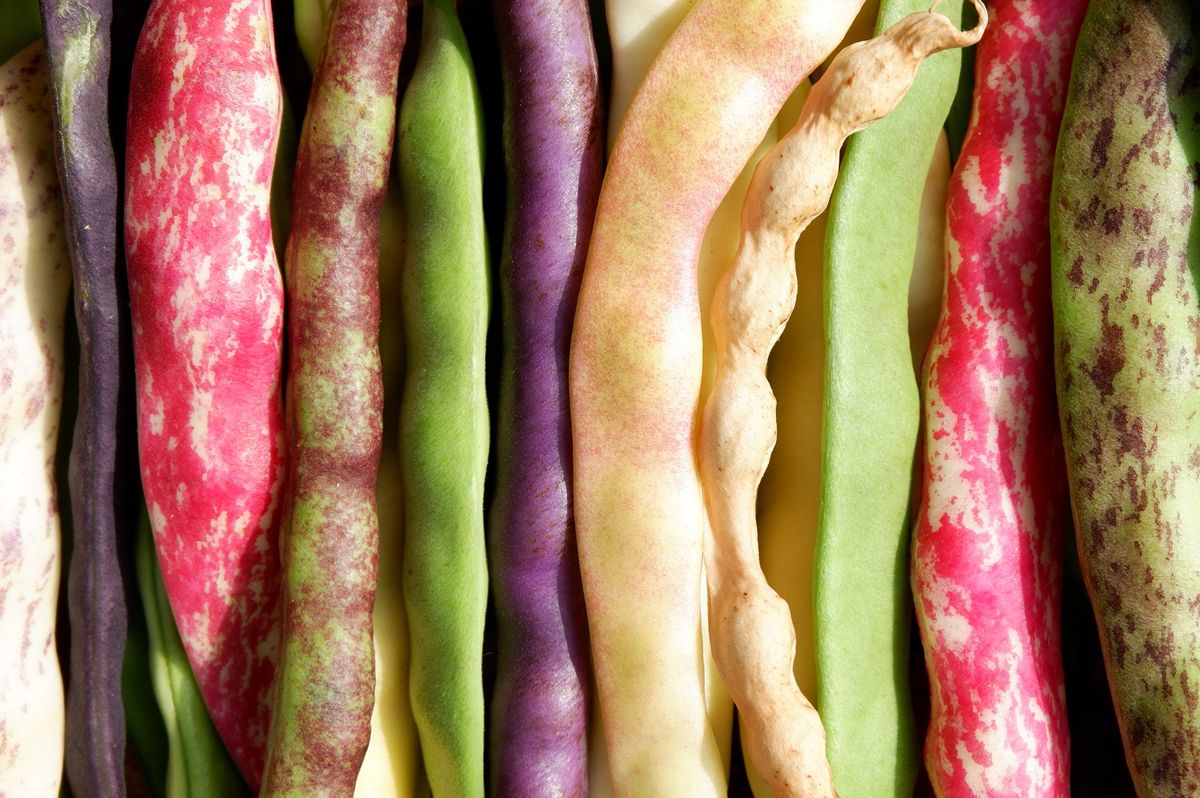Most gardeners will have saved a few seeds over the years. Runner beans are the most likely candidate and one of the easiest seeds to save seed from.
Saving seed completes the life cycle of the plant, making it a great way for children to learn. If they have grown their own beans from seeds this year, then now you can show them that from one plant you get dozens of pods and inside each pod are six to eight bean seeds. Each one of these seeds will grow into another plant and make hundreds more seeds. It’s easy to see where the magic bean story came from and on a practical note it shows children how gardeners used to ensure plenty of seed for the following year before the arrival of seed merchants. I’ve got a huge planter of runner bean plants in my greenhouse this year, which makes it very easy to save seed from them. I can leave a handful of pods on the plant now and allow them to dry out in the warm conditions inside my greenhouse. When the pods have turned brown and crispy I can pick them off, open them up and store the beans somewhere cold and dry.
If you are serious about saving seed there are a few rules that need observing to ensure good results. But for the purpose of the amateur gardener and for school projects there are plenty of simple techniques that can be used.
The first thing to realize is that plants exist purely to make seed, that’s why its important to dead head flowers and to keep picking pods and vegetables as they develop. As soon as the plant has successfully made seed it has done its job and will either expire, in the case of annuals, or it will start to shut down for winter survival.
So if you are hoping to save seed from your greenhouse tomatoes, runner beans, courgettes and peppers you need to wait until late in the season if you still want to be harvesting produce too. Now is a good time to start, but you can wait a few weeks more for plants like runner beans and courgettes that are still cropping prolifically. Most plants are easy to save seed from, you simply allow a few late ‘fruits’ to mature fully and then remove and dry the seed. You choose the healthiest plants and the disease free fruits and save the seed from these. Where possible it’s a good idea to save seed from a few plants of the same variety to get good biodiversity. Some plants need to be totally isolated from related plants in order to get true seeds. This is a very complicated topic, so unless you have very rare plants or are very interested in the process it may be better to concentrate on the easiest types first.
Greenhouse tomatoes are a great choice for saving seed especially if you are growing some of the rare and sought after heritage varieties. You can save hundreds of seeds from a few fruits and share them with friends and other gardeners or take them to seed swap sessions where they will be very popular. It’s also a good way to save money. Once you’ve got a tomato variety that grows well in your garden and greenhouse, it’s worth keeping it and saving seed from it for years to come. But even if you don’t have any tomatoes in the greenhouse you can also save seed from bought tomatoes, but do make sure they are a variety you want to grow. Avoid the highly bred F1 varieties when saving seed from any plants because the offspring are unlikely to bear similar characteristics to the parent plant.
Saving seeds from Tomatoes is slightly more complicated than many plants because the seeds have a protective jelly coating that is normally removed as it passes through the digestive system of birds and animals. Once removed the seeds can germinate when conditions are right. You need to remove this coating to save tomato seeds successfully from year to year.
Choose Your Fruit
Choose healthy, large fruit from disease free plants. Pick one or two fruits from two or three plants of the same variety to increase the gene pool of your seeds.
Remove The Seeds
Slice open the tomatoes and remove the seeds. Try and separate the seed clusters from the fleshy pith. You will find dozens of seeds in most tomatoes, though beefsteak tomatoes may have fewer.
Ferment The Seeds
Mix the seeds up from all of the tomatoes and if you don’t want to save them all then take a teaspoonful of the mixture and place in a small glass jar. Add 200ml of slightly warm water and leave the seeds to ferment for 3-5 days.
Prepare The Seeds
After this time, drain the excess water away and pour the seeds onto kitchen paper. The jelly coating should have dissolved and you will be left with lots of tiny creamy, flat seeds. Separate them out as best you can and leave the paper sheets to dry in a warm, airy place. Write on the paper the name of the variety.
Save The Seeds
When the paper is dry you can either carefully peel the seeds off and place them in a labelled envelope, or store the whole sheet somewhere cool and dry.
The Author:
To know more about Greenhouses and Greenhouse Bean Feast – Saving seed
